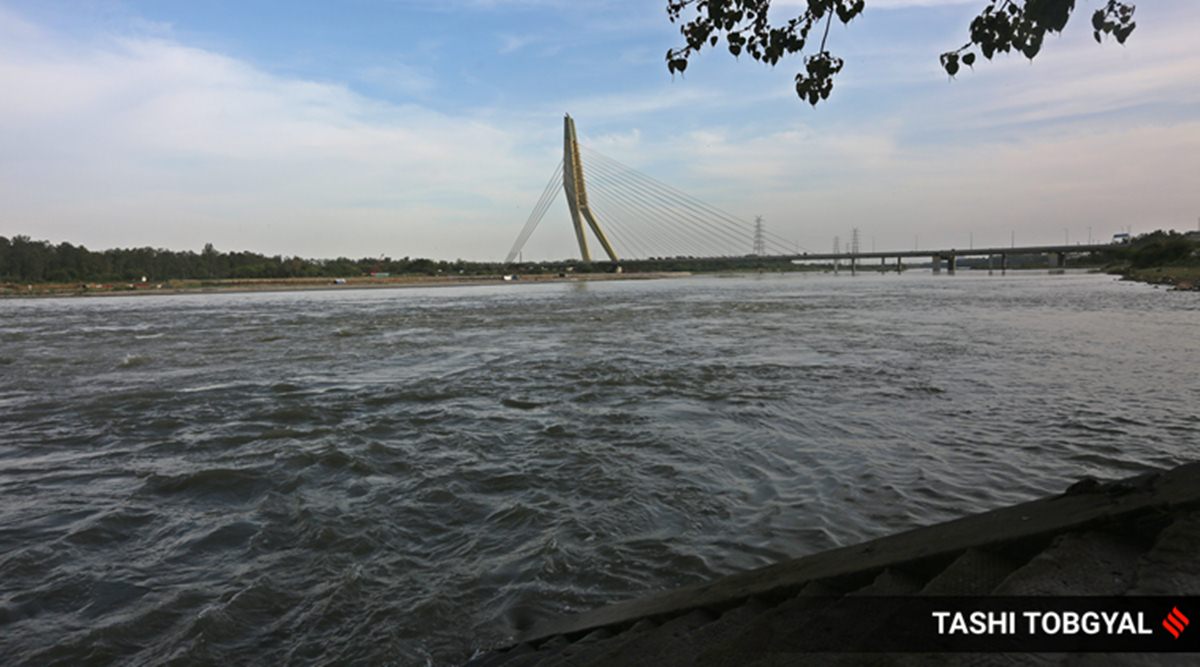 Delhi generates 3,800 million litres of sewage per day and half of this goes directly into water bodies without being treated. (Express Photo)
Delhi generates 3,800 million litres of sewage per day and half of this goes directly into water bodies without being treated. (Express Photo)A blue-green policy that aims at bringing water management and green infrastructure together, focus on cycling infrastructure in the city, vertical growth in unauthorised colonies to make it less dense — these are some of the features that would be part of Delhi’s 2041 Master Plan.
Delhi Development Authority vice-chairperson Anurag Jain told The Indian Express that these features would be part of the next master plan to control pollution and provide better health facilities.
The current Master Plan 2021, which lays down planning guidelines, policies, a code of development, and space requirements for various socio-economic activities supporting the city’s population, is set to end next year. The DDA is presently in the stage of consultation with different stakeholders for MPD 2041.
‘Blue-green’ infra policy
Under the MPD 2041, DDA has proposed a ‘blue-green’ policy — integrating drains (blue areas) and land (green areas) around them. This includes developing orchards, planned parks and landscaped recreational greens alongside development of wetlands, ponds, lakes, natural drains, canals.
On the blue-green policy, Leenu Sehgal, commissioner of DDA’s planning department, said Delhi has around 50 drains (blue areas) managed by different agencies and due to their poor condition, land around (green areas) has also been affected.
DDA, along with other agencies, will integrate them and remove all sources of pollution by checking the outflow of untreated wastewater. A mix of mechanised and natural systems may be adopted, and dumping of solid waste in any of these sites will be strictly prohibited by local bodies through imposition of fines. Thereafter, real estate projects would be developed along these integrated corridors, she said.
Cleaning of water bodies and nullahs has, however, been a challenge for different agencies. As per an earlier report by the Central Pollution Control Board, Delhi generates 3,800 million litres of sewage per day and half of this goes directly into water bodies without being treated. DDA’s earlier attempt to constitute a special task force and penalise those dumping waste in the Yamuna did not met with much success.
Continuous green mobility circuits of pedestrian and cycling paths shall be developed along the drains to serve functional and leisure trips, said a DDA official. “The aim is to provide adequate amenities like toilets, drinking water fountains, resting places, visitor information centres, recreation, exercise, yoga, nature classes,” he said.
DDA, along with developers, will also opt for vertical development in unauthorised colonies. “We will take up redevelopment in unauthorised colonies by asking people to give their land so that we can widen roads and give other facilities. We will increase FAR in the remaining portion,” said Jain.
With a rise in cycling as transportation mode among people, DDA said it would make provisions for cycle tracks. Work on a 33-km-long dedicated track for cyclists and pedestrians, with four corridors connecting areas like Jahanpanah forest and others in South Delhi, will start this month, said Jain.